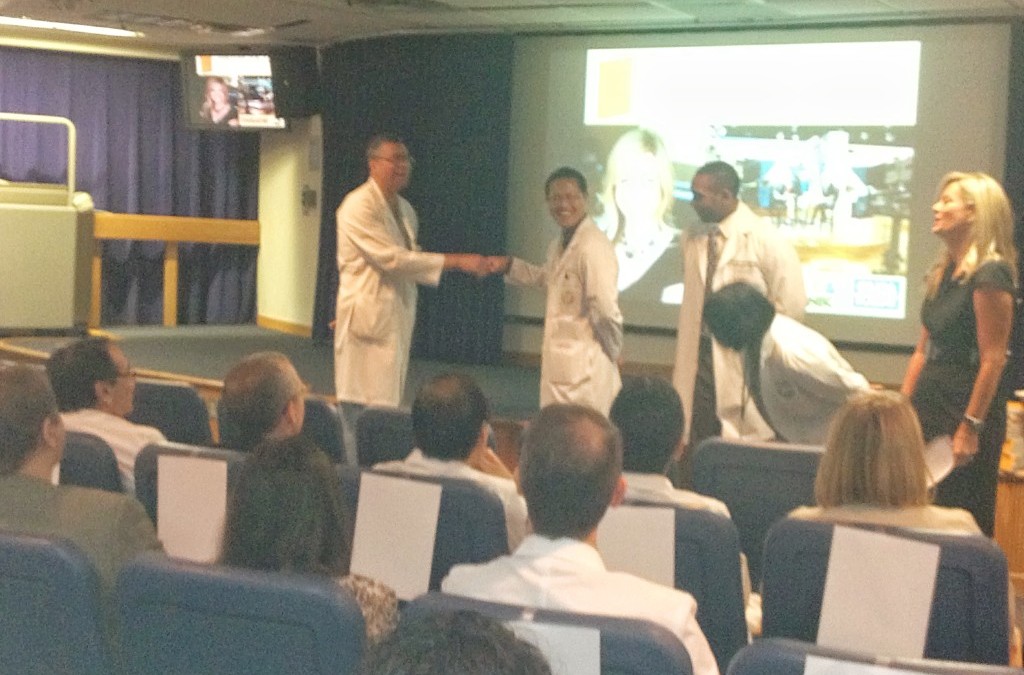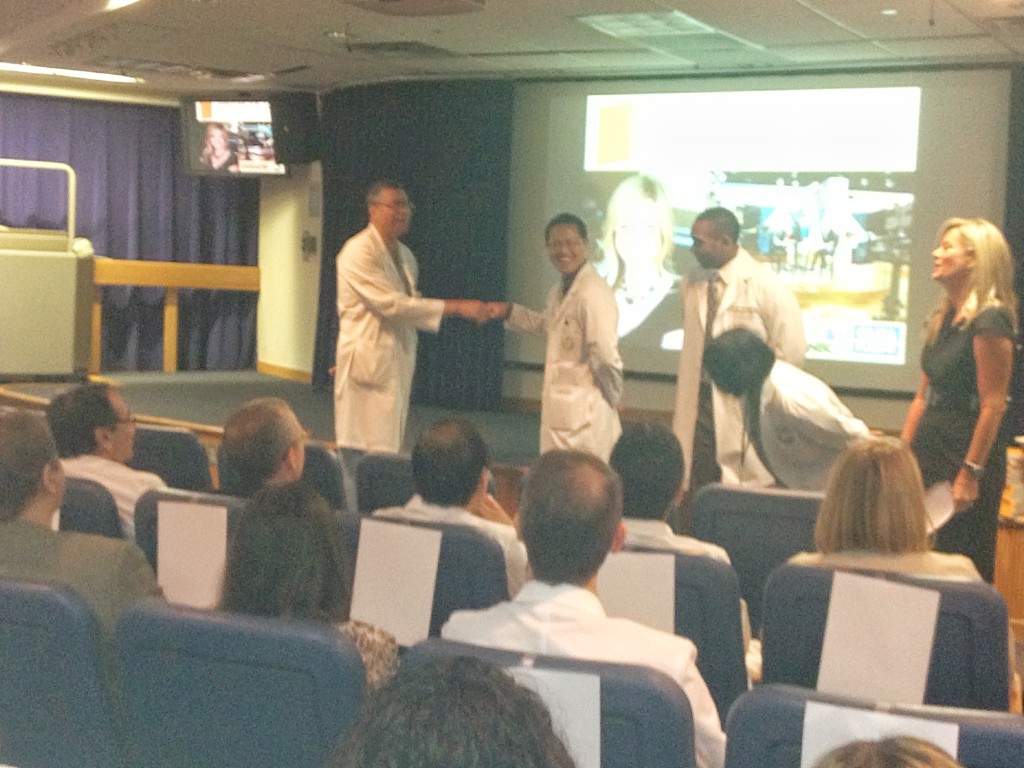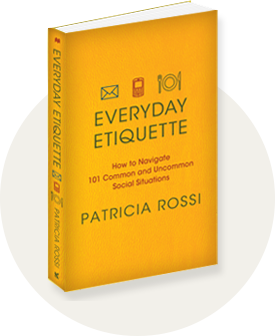(hint: it’s not all about empathy)
This is Medical Practice week, and proper etiquette is an essential part of any type of quality medical, dental, or health-based practice. We all know the stress and tension of going to the doctor’s office, and the interactions patients have with staff play a big role in the outcome for the patient’s health. Medical etiquette is more than just the patient’s interaction with their doctor, and is felt along every step of the visit, including before their arrival and after the visit. Let’s get started.
Ironically, when a patient visits the doctor, they have many of the same questions they would at any business.
Am I going to be respected?
Will they listen to me?
Do they care about me?
The emotions and stress are way up because we’re about to learn about our personal health, and not just how well our chicken is cooked! Essential medical etiquette dictates people are treated inwardly and outwardly, as research has shown a patient’s attitudes can play a critical role in treatment and outcomes.
But, there is an important piece of medical etiquette to be learned here, no matter what role you play in the patient’s experience.
Warmth, empathy, and understanding are not the primary elements of medical etiquette.
Of course, we all deserve to be treated by, and treat others with the kindness and care we desire to be shown ourselves. For those of us who shrug our shoulders and think “I’m not the warm and fuzzy type”, you’re neither exempt or expected to make a total personality change. Even if you don’t naturally empathize with others, or the difficult nature of the work makes detachment necessary, proper manners and etiquette in any situation will help facilitate a feeling of respect and ease.
In fact, Doctor Michael Kahn observed that patients were even more concerned about the professionalism and manners of their doctor than the caregiver’s “bedside manner”. Listen to this…
When I hear patients complain about doctors, their criticism often has nothing to do with not feeling understood or empathized with. Instead, they object that ‘he just stared at his computer screen,’ ‘she never smiles,’ or ‘I had no idea who I was talking to.’
Dr. Kahn went on to describe the comfort he felt at his own doctor’s impeccable manners and etiquette. Foremost on his mind was not “what compassion”, but “what a professional”.
Before patients even see the degrees on your wall, they should experience a professional level of etiquette and service from your staff and yourself. This sets the table for providing world class care throughout the entire process.
Though we all wish to be cared for by a compassionate doctor, dentist, chiropractor, therapist, or anyone else; we first want to know they are a thorough professional at what they are doing. Medical etiquette and personal compassion are not the same, but they are integrally tied together. Health care providers who can weave both actions in a meaningful way will put their patients at ease and be able to provide the necessary care.
While empathy and compassion can be taught (and many medical schools wisely do) and should not be replaced, medical etiquette is more easily learned, tracked, and measured. A simple checklist can be made for each employee role, including the doctor! In his article, Dr. Kahn presents his personal checklist:
![]()
- Ask permission to enter the room; wait for an answer.
- Introduce yourself, showing ID badge.
- Shake hands (wear glove if needed).
- Sit down. Smile if appropriate.
- Briefly explain your role on the team.
- Ask the patient how he or she is feeling about being in the hospital.
Now, here are four additional points covering the before and after situations with the patient.
- Check-in with the patient within 24 hours of their visit. Use proper manners (Mr/Mrs, “How are you?”, etc.), and then ask if they have any questions about their visit.
- Be sure the waiting and patient rooms are clean and well lit. Provide up-to-date reading material, and refreshments if possible.
- Thank the patient for coming in, confirm their contact information is accurate, and their personal information is correct.
- Follow up with the patient within 48 hours, even for a simple thank you!
Essential medical etiquette and behavior is fast and easier to learn than a whole-hearted integration of empathy, which often only comes from years of experience. With this knowledge, here are five elements of essential medical etiquette.
Be a professional first, and an empathizer second.
Remember to use your manners, keep a clean personal appearance, sterile equipment, and look the patient in the eye. Patients will first take comfort in the actions of the staff to present a professional atmosphere.
Trust the routine.
The checklist presented above is a great place to start, but talk to the staff and make changes based on what your practice or hospital needs are.
Train the whole staff.
Again, it’s easy to only think of the doctors and physicians who have the responsibility to proper etiquette. Not so! While any good leader will model this behavior, it’s essential the entire staff is trained and practices patient etiquette.
Proper etiquette amongst the staff.
We’ll go in to detail in another post, but good manners should be modeled not only to the patients but amongst the staff as well, regardless of pay or position. Poor etiquette between staff members will surely undermine positive interactions with patients, and likely mask significant problems that require immediate attention.
The entire process matters.
From the moment a patient calls the office, or visits your website, are they being treated in a respectful, professional manner? Is the site up to date and viewable on their phone or tablet? Are the directions correct? Is parking accessible?
When a patient arrives, are the seats clean and comfortable? How old are the magazines? Are refreshments available? Does the front desk greet the patient immediately or wait for them to approach? All of these questions and interactions matter to a patient, and help put them at ease and show the office is a professional environment.
For medical professionals, the effect of proper etiquette with patients is of enormous importance. Many medical practices essentially operate as small businesses, and unhappy patients can find another provider if they do not feel comfortable or respected. Consequently, positive experiences and word of mouth (both in person and online) generate more referrals, leads, and patients who are desperately seeking what you can provide. Let’s make sure you’re the professionals leading the trend, not the ones left behind.
Before you leave today, ask yourself (and others) if your office is providing the type of care described above. If so, continue to train, encourage, and keep asking. If you discover you’re not, begin with implementing the checklist, which you can download here.
Want more tips for medical etiquette? Click here to read my interview with the American College of Physician Executives, where I lay out five additional steps to implementing proper etiquette.
Illustration provided by Andrew McKinley and Gustavo Cordeiro, via TheNounProject.com





